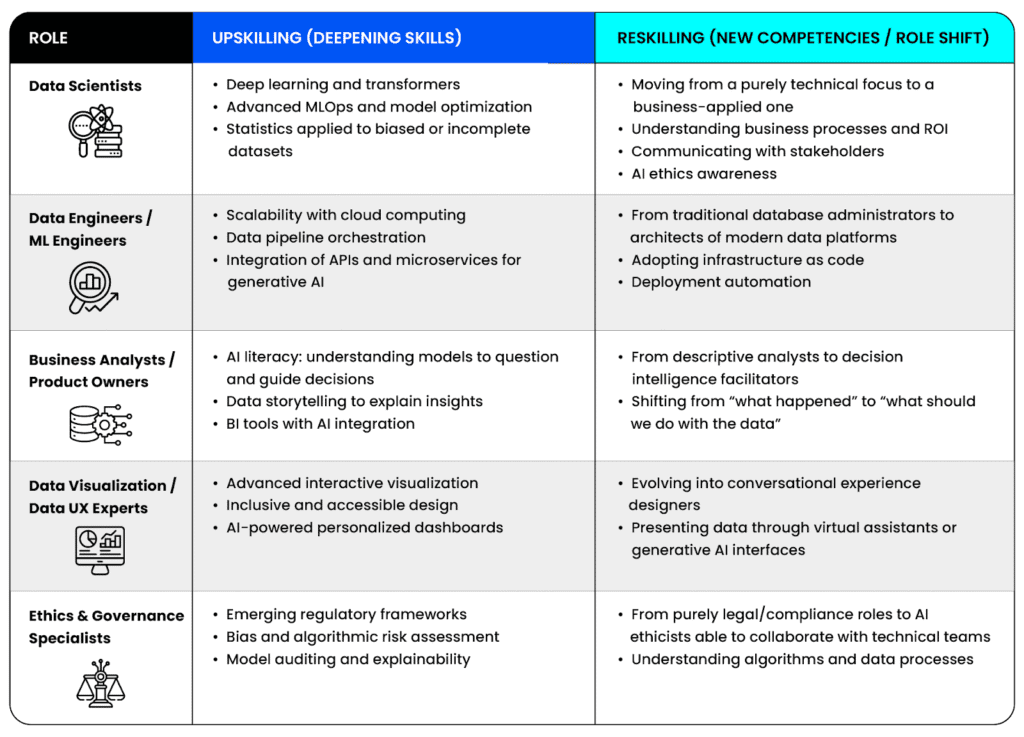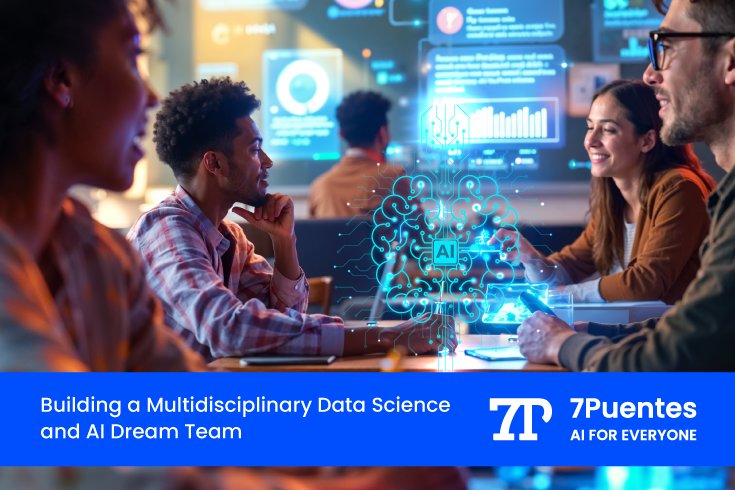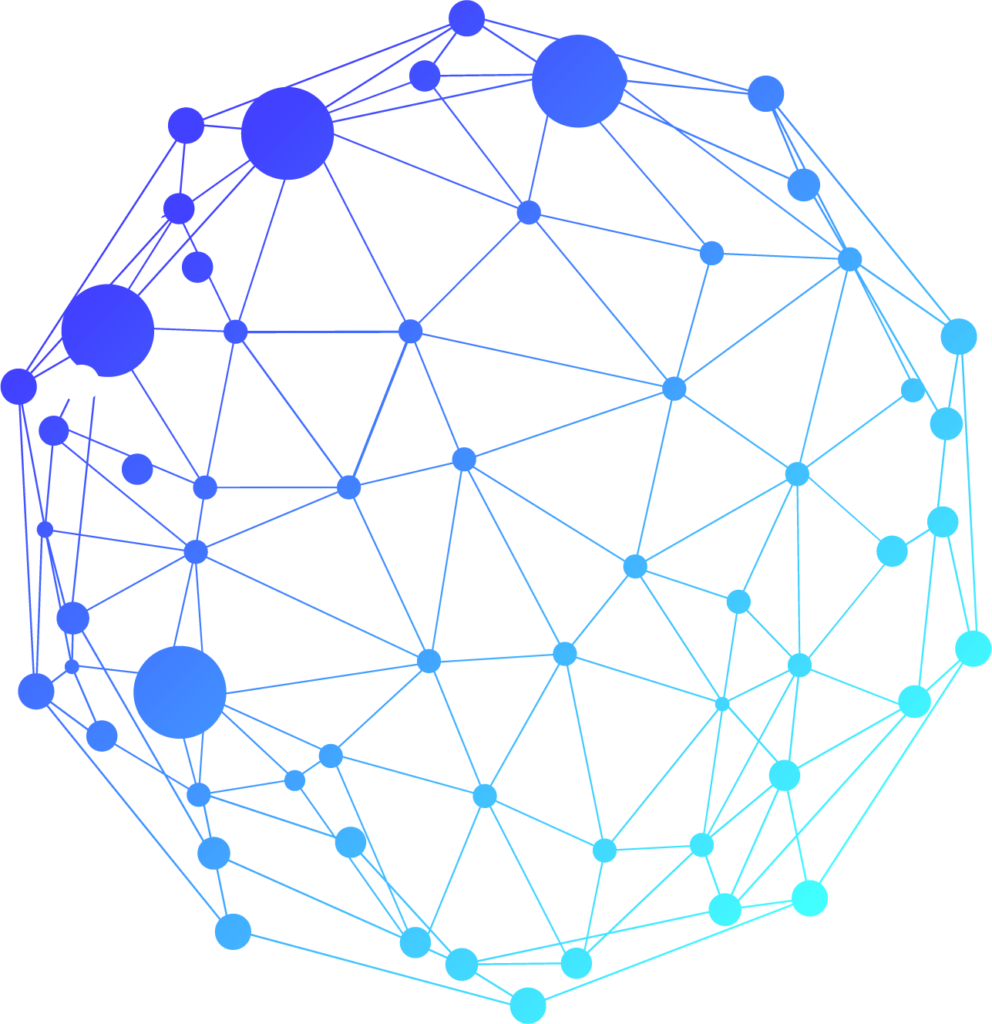For companies in Latin America and around the world today, building a multidisciplinary data science and artificial intelligence team is a key challenge. As 78% of IT positions require AI skills and 72% of managers are improving their competencies, digital transformation demands diverse teams. Companies can transform data into strategic decisions and build an AI dream team that drives competitiveness and sustainable growth by integrating data scientists, machine learning engineers, business analysts, visualization experts, and ethicists.
Data science is currently a highly interdisciplinary and multidisciplinary «team sport.» Diversity of perspectives is crucial. In fact, perspective and attitude are sometimes as important as education and experience.
Creating a data science and AI team within an organization is more than just an operational improvement; it’s a fundamental strategic transformation. Data and the ability to manage it have become some of the most valuable assets for companies of all sizes and sectors.
In this case, each role offers a valuable perspective, from the quality and scalability of the models to their interpretation and application in real-world decision-making. The key is designing a team with diverse skills and a collaborative culture that transforms complex data into tangible value for the organization.
This topic also leads us to explore the upskilling and reskilling required by the different profiles within a data and AI dream team, considering current demand. Upskilling involves deepening existing skills, while reskilling involves acquiring new skills to change roles or expand reach.
- According to a recent survey by the AI Workforce Consortium, 78% of IT jobs now require AI skills. Additionally, 72% of managers are actively upskilling, and 51% are shifting competencies, according to edX 2025.
- A recent study, “Generative AI Adoption and Higher Order Skills”, shows that roles involving generative AI tools require a 36.7% increase in cognitive skills, such as critical thinking and analysis, as well as a 5.2% increase in soft skills.
Key Roles and Responsibilities
A well-structured data science and AI team should include a combination of profiles with specific and complementary skills.
1. Data Engineer (The Muscle of the Team)
Responsibility: This role is the starting point. Its function is to build and maintain the infrastructure that enables the storage, processing, and analysis of large volumes of data. It handles the engineering aspects of delivering the data that the rest of the team will work with, creating pipelines, managing databases, and ensuring the quality and accessibility of information.
Importance: This is considered a foundational role for any team, as it requires the ability to obtain data before analyzing it.
2. Decision Maker or Team Leader (The Strategist)
Responsibility: Strong and visionary leadership is crucial. This person must have a deep understanding of business objectives to identify worthwhile decisions with data. Their role includes designing metrics, translating decisions into models, and determining the analytical rigor required based on the business impact. It acts as a bridge between technical objectives and business strategy.
Importance: Decision-making capabilities must be established before the team can generate value from the data.
3. Data Analyst (The Enchanter)
Responsibility: Their role is to interpret data and transform it into clear, communicable insights for stakeholders. This role can initially be filled by any member of the organization with basic data visualization tools.
A skilled analyst focuses on speed: quickly exploring and uncovering potential insights so the decision-maker knows which areas merit further analysis.
Skills: They use tools and methodologies to visualize data and find patterns. The key to a skilled analyst is speed and the ability to produce «fast and modest» code, not necessarily perfect.
4. Data Scientist (The Creative)
Responsibility: This profile has deep knowledge of statistics, machine learning, and modeling to generate new ways of analyzing data. They develop predictive and prescriptive models that turn data into actionable information. A data scientist, strictly defined, is an expert who masters the roles of analyst, statistician, and machine learning engineer.
Skills: Provides creative and innovative solutions, identifying patterns that others might overlook.
5. Statistician
Responsibility: Their role is to control the enthusiasm generated by data exploration and prevent the team from drawing unfounded conclusions or going beyond the available data. They help decision-makers reach confident conclusions when perfect data is lacking, applying rigor to the process. They are vital for evaluating whether a machine learning solution will work in production.
Importance: Inspiration is cheap, but rigor is expensive, and the statistician provides that necessary rigor.
6. Applied Machine Learning Engineer
Responsibility: Their job is to use existing algorithms and adapt them to work with the company’s data sets. Their focus is not on building new algorithms, but rather on transforming the code to make existing ones useful.
Profile: They must have a tolerance for failure, as much of the work involves experimenting with multiple approaches until a viable solution is found. They need a deep respect for rigorous evaluation of results, collaborating with the statistician.
7. Complementary and Advanced Roles
To further empower the team, other roles can be incorporated:
- Analytics Manager / Data Science Lead: A hybrid of a data scientist and a decision-maker who acts as a «force multiplier» for the team, ensuring their work adds value to the business.
- Qualitative Expert / Social Scientist: If the decision-maker lacks experience in data-driven decision-making, this role can complement them. They help translate ambiguous intuitions into clear instructions and concrete metrics, examining all angles of a problem.
- Researcher: This role, often with a PhD, is needed only when existing market solutions are insufficient. Their role is to create new and expensive tools and algorithms, so hiring them should occur after exhausting all available options.
- Other Specialists: Depending on the project, roles such as business domain experts, ethicists, software engineers, user experience designers, or data visualization specialists may be crucial.
Strategies for Team Formation and Blending
For this role blend to work, it is essential to follow certain strategies:
A) Start with the Essentials: It is recommended to start with a Data Engineer and a Decision Maker, and then train existing employees to act as Analysts.
B) Assess Needs: Before recruiting, the organization’s specific needs should be assessed to determine which profiles are prioritized.
C) Encourage Diversity: A team with experience across different industries and domains can bring unique perspectives and enrich the analysis. Diversity of perspectives is just as important as education and experience.
D) Integration and Collaboration: The team should be integrated with other departments through joint projects and open communication to maximize its impact and foster a company-wide data culture.
Why diversity and diverse backgrounds are key to achieving better results: Covers the Full Data Lifecycle; Fosters Innovation and Creativity; It improves decision-making and business impact, and increases efficiency and resilience.
In conclusion, the importance of a multidisciplinary team lies in the fact that applied data science is too complex to be mastered by a single individual or a homogeneous group. It is the combination of talents and collaboration across different roles that allows raw data to be transformed into innovation, operational efficiency, and a fundamental strategic advantage for the company.
FAQs for building an effective data science and AI team
1. Why talk about a «dream team» in data and AI?
Because artificial intelligence projects rarely depend on a single person. They require teams capable of connecting the technical side with the strategic, operational, and ethical aspects.
2. What profiles are key in a multidisciplinary team?
• Data scientists: They research, test algorithms, and design predictive models.
• Data and ML engineers: They build the infrastructure for the models to work at scale.
• Business analysts: translate technical findings into decisions and value for the organization.
• Visualization experts: make data clear and understandable for everyone.
• Ethics and governance specialists: ensure the responsible and trustworthy use of AI.
3. What makes the team truly work?
Collaboration. A dream team isn’t just about bringing together brilliant specialists, but also about getting them to work with a common language, shared goals, and a focus on real impact.
4. What is the most common mistake when building these teams?
Thinking that success is achieved only with more programmers or more models. In reality, the greatest value emerges when different perspectives are integrated: technical, strategic, creative, and human.
5. How can the success of a dream team be measured?
Not only by the precision of an algorithm, but by its ability to transform complex data into useful, ethical decisions with a tangible impact on the organization or society.
Upskilling & Reskilling in Data Science and AI
The following table details the upskilling and reskilling required by the different profiles within a data and AI dream team, considering the current demand.

Clearly, the future of these profiles lies in moving toward a hybridization of skills: it’s not enough to be a technical or business specialist; you have to master a shared language that connects data, technology, strategy, and social responsibility.
Final Thoughts
Building a data science team is not a luxury, but a strategic necessity. This elite group is the true engine of innovation, transforming raw data into insights that inform and completely transform decision-making. The team’s true power lies in its composition: an eclectic mix of talents and skill sets that guarantees a unique and comprehensive perspective.
A siloed data science team loses its value. Seamless integration with the rest of the organization is vital so their work resonates and is felt in every corner of the company. By collaborating closely with other departments, the team maximizes the impact of its projects and instills a data culture throughout the organization, making evidence-based decisions the norm.
In a rapidly evolving field, talent is the most valuable asset. Organizations must do more than recruit the best talent; they must also commit to retaining and helping them grow. This means offering inspiring challenges, constant learning opportunities, and a work environment that fosters collaboration and critical thinking.
The success of a data science team cannot be reduced to simple metrics. A holistic assessment is required that combines quantitative impact, such as ROI and efficiency, and qualitative impact, such as how the work improves processes or generates new ideas. It’s an ongoing process that requires adjusting the strategy to ensure the team remains relevant and continues to generate tangible results.
Would you like to learn more about our consulting, development, and training services for data science and machine learning projects? Contact 7Puentes executives free of charge.


